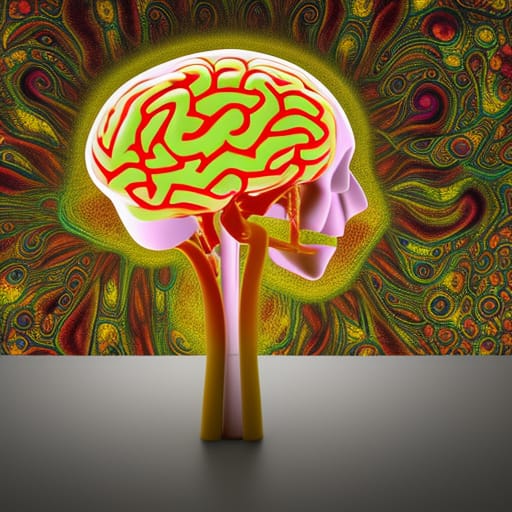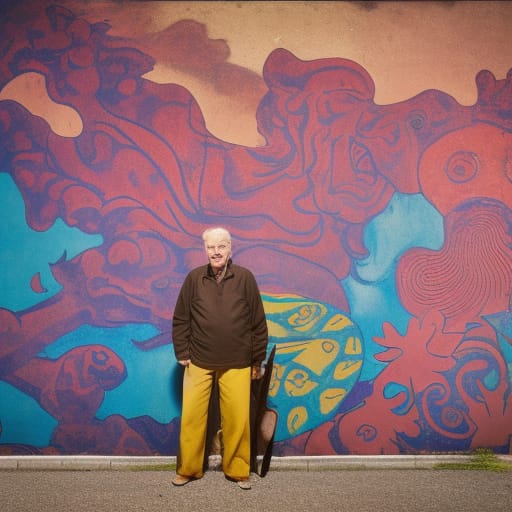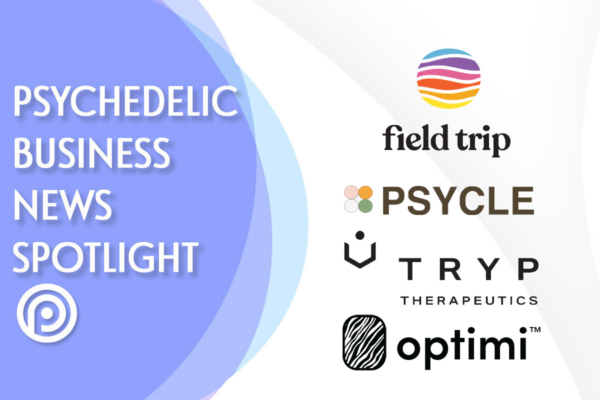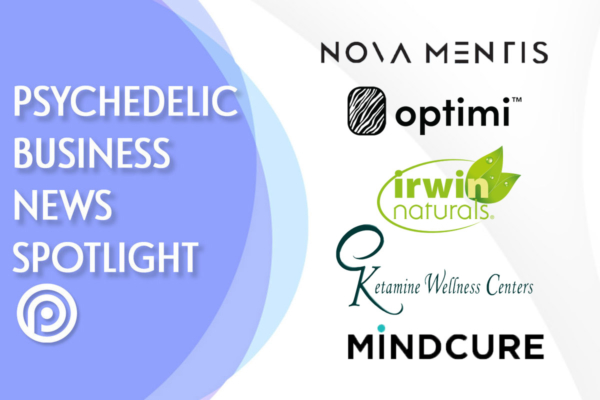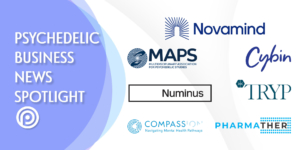
Red Light Holland’s psilocybin capsules successfully passed an 8-week stability test, paving the way for medical distribution in Australia, where the drug has been reclassified for treatment-resistant depression. Concurrently, a study in Communications Biology offers new insights into how psychedelics like LSD and ketamine impact brain activity, potentially shedding light on consciousness. In Oregon, psilocybin therapy has shown promise, notably improving a patient’s long-term OCD symptoms, showing the growing acceptance of psychedelics in mental health treatment.
Red Light Holland’s Psilocybin Microdosing Capsules Pass Stability Test, Cleared for Australian Distribution
Red Light Holland’s psilocybin microdosing capsules have successfully completed an extensive 8-week stability testing phase conducted by CCREST Laboratories according to a recent press release. These capsules are meticulously crafted from psilocybin truffles cultivated on the company’s farm in the Netherlands, and their stability has been unequivocally confirmed.
Red Light Holland is a company dedicated to the cultivation, production, and sale of functional mushrooms and home grow kits. Operating within the legal framework of the Netherlands, the company offers psilocybin truffles. Currently, their focus lies on the development of psilocybin microdosing capsules, showcasing their commitment to innovation in this field.
Stability tests are performed following a comprehensive analysis known as the Certificate of Analysis, which verifies the medical grade quality of the capsules. This analysis ensures that the capsules are free from pesticides, contaminants, and heavy metals. CCREST Laboratories has completed the initial stages of stability testing for Red Light Holland’s microdosing capsules. Testing was conducted after 6 and 8 weeks of storage to determine the capsules’ shelf life.
The capsules maintained the required psychoactive compounds. Stability testing for psychoactive capsules like psilocybin is particularly crucial for several reasons. Firstly, these capsules must maintain consistent potency and concentration of the active compounds, psilocybin and psilocin, to ensure they deliver the expected therapeutic or psychoactive effects. Variations in these concentrations could result in ineffective treatment or unexpected, potentially harmful side effects. Secondly, instability could lead to the degradation of psychoactive compounds, reducing the efficacy of the capsules over time. Finally, the breakdown of these compounds might produce harmful by-products, posing additional health risks. Overall, stability testing is vital for establishing the safety, efficacy, and shelf life of psychoactive capsules, thereby gaining regulatory approval and consumer trust.
Distribution Plans: NUBU Pharmaceuticals, a leading medical cannabis company in New Zealand, intends to distribute these capsules in Australia.
As a reminder on February 3, 2023, Australia made a significant announcement regarding its drug policy on psilocybin, the active compound found in psychedelic mushrooms. The substance has been reclassified from a controlled substance to facilitate medical applications. Notably, this regulatory change grants psychiatrists the authority to prescribe psilocybin to patients struggling with treatment-resistant depression. Effective July 1, 2023, this legislative shift represents a crucial milestone in Australia’s approach to psychedelic medicine and mental health treatment. This decision aligns with a growing body of research highlighting the potential therapeutic benefits of psilocybin for various mental health conditions.
Todd Shapiro, the CEO of Red Light Holland, expressed immense pride in the results and emphasized that these capsules set a new standard for quality and safety. They aim to establish a new benchmark for emerging legal markets.
Read also: Australia Becomes the First Country to Prescribe Psychedelics to Treat Depression and PTSD
Unlocking the Secrets of Consciousness: What Psychedelics Reveal About Neuronal Synchronization and the Brain
Based on current scientific theories, consciousness emerges from the complex interplay of neurons within the brain. These intricate electrical and chemical communications among neurons are believed to give rise to the remarkable phenomenon of consciousness, enabling cognitive functions, emotions, and sensory perceptions. The collective behavior of this neural network is considered fundamental to the experience of consciousness itself.
So…What Can Psychedelics Show Us About Consciousness?
A recent study published in Communications Biology has shed light on the profound impact of psychedelics on the collective behavior and interaction of neurons. The study, conducted on rats, compared two distinct classes of psychedelics: the classic LSD type and the less-common ketamine type (known for its anesthetic properties at higher doses). Despite acting on different brain receptors, both classes are renowned for inducing psychedelic experiences in humans. This research provides valuable insights into the transformative effects of psychedelics on neuronal activity.
The study measured brain activity in nine conscious rats using electrodes while administering psychedelics. The electrodes captured two types of signals: brain waves from groups of neurons and short electrical pulses from individual neurons. Classic psychedelics, such as LSD and psilocybin, impact the 5-HT2A receptor, which is closely linked to mood regulation. On the other hand, Ketamine functions differently by affecting the NMDA receptor, which plays a role in facilitating neuronal firing.
Scientists hypothesized that both types of psychedelics would have a similar impact on brain cells, and their hypothesis was confirmed. Both substances induced rapid and synchronized brain waves across various regions. Typically, such waves occur momentarily, but in this case, they persisted for an extended duration. Initially, it was believed that a single brain area was responsible for controlling these waves. However, upon further investigation, it became evident that they occurred simultaneously throughout the brain. This exceptional level of coordination is referred to as phase synchronization.
They also discovered some differences too. During the psychedelic state, they conducted measurements of rapid electrical pulses known as action potentials in individual brain cells. These pulses serve as the means by which neurons communicate with one another. However, it was observed that LSD and ketamine had distinct effects on these pulses. LSD resulted in a decrease in overall neuronal activity, whereas the effects of ketamine varied depending on the specific type of neuron. Thus, it is evident that these electrical pulses are not directly correlated with the psychedelic experience.
Hence, the synchronized wave phenomenon, which refers to how neurons collectively behave, appears to be the most closely associated with the psychedelic state. From a mechanistic standpoint, this notion holds merit. It is plausible that such increased synchrony profoundly impacts the integration of information across neural systems, which is crucial for normal perception and cognition.
The intriguing possibility of a connection between neuron-level system dynamics and consciousness emerges. It implies that consciousness relies on a coupled collective state rather than the mere activity of individual neurons. However, it is important to note that this link remains highly speculative at present. The primary reason is the absence of observed evidence in human brains. Furthermore, one must exercise caution when extrapolating human experiences to other animals, as it is impossible to ascertain the exact shared aspects of a trip with our rodent counterparts.
Read also: Oregon’s First Licensed Psilocybin Center Charges $2800 for One Session: Are the Costs Justifiable?
Former Entrepreneur Finds New Hope in Oregon’s Emerging Psilocybin Therapy Program
The therapeutic use of psilocybin mushrooms was launched in Oregon at the start of the year, although it’s only recently that individuals have begun to partake, due to the time needed to prepare new guides for the program.
Among the early participants is James Carroccio, a former entrepreneur who is not a current resident of Oregon. Carroccio journeyed from Arizona in his recreational vehicle to participate in the program. He was previously a resident of Bend, Oregon, and has been monitoring the state’s new therapeutic initiative closely, with the aim of seeking treatment.
At the age of 14, Carroccio discovered his father had passed away from a cardiac event, and with his mother not in his life, he found himself suddenly isolated. He described the experience as completely upending his life and developing OCD. Over the past 30 years, Carroccio said he’d seen at least a dozen therapists, but it didn’t help. “The therapist always gave me a quick feel-good. But the pattern and the behavior never changed” he said. “With the hope of psilocybin, I was looking for a complete change.”
Carroccio discovered Bendable Therapy, located in Bend, Oregon, which is one of the few centers in the state that provides psilocybin treatment. What sets it apart is that it operates as a nonprofit organization, aiming to enhance accessibility to this therapy. While there is no fixed fee for the psilocybin sessions, they recommend a donation of approximately $2,300.
The Verdict
“My OCD might have been a complication from losing control of my life when I was 14 years old and trying to take control and make everything in order, not chaotic,” he said. “When I exposed myself to that depth of grief that I’d never known, I was immediately rewarded with the most intense love.”
After undergoing psilocybin therapy, Carroccio has experienced notable changes in his behavior. He now drives at a more moderate speed and engages in conversations with people he may have previously ignored. His spouse, Tanya Smith-Carroccio, observes a newfound sense of reflection and a decrease in impulsive actions. Carroccio is contemplating another psilocybin session to further enhance his personal growth and expresses regret that such therapy wasn’t available four and a half decades ago.
While Carroccio had a positive experience, it is crucial to acknowledge that the existing framework is not officially recognized as a medical treatment. Guides in the program are not authorized to offer diagnoses or address health concerns. Their certification solely permits them to oversee psilocybin sessions and ensure the safety of participants.
The American Medical Association’s recent approval of a CPT III code specific to psychedelic therapies has given professionals and proponents in the field reason to be optimistic about insurance coverage for these treatments. However, the path to widespread acceptance and coverage still appears to be lengthy.

